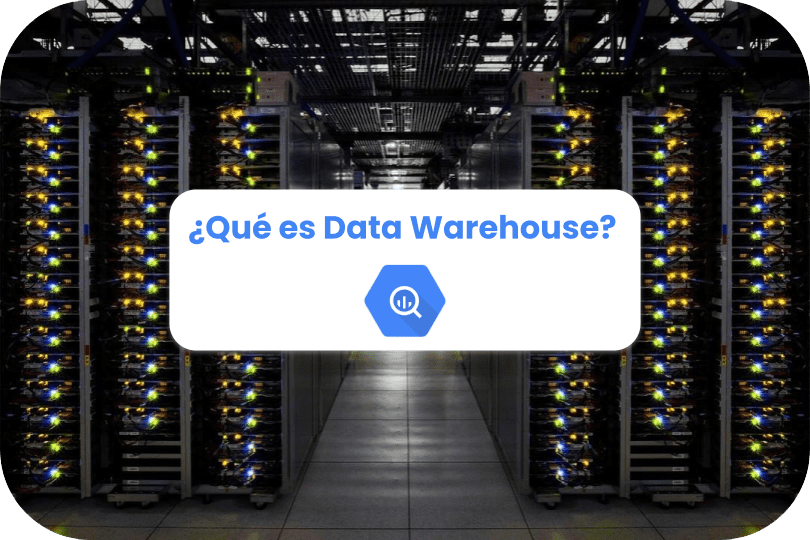Currently, companies depend on the use of information for decision making. Once I know collect, store and integrate data effectively, it is possible to proceed to analyze the important information, fundamental to optimize the benefits, generate income or contain the costs of each organization. In this post we tell you everything about the data storage tool, Data Warehouse, what is it, what it is for, and all its main features.
To contextualize, we must know that heBusinesses use data from multiple sources which can be internal such as personnel data, status of sales or purchases, customer monitoring, new opportunities, etc., or external data, such as information on the competition, the market, potential customers, etc. Thus, the more you expand the information horizon to be used for decision making the greater the amount of data that will need to be stored.
We can process all this information with methods such as ETL (Extract, Transform, Load) and then store the result in a Data Warehouse, an electronic warehouse where companies keep a large amount of valuable information. In this place, the available data is stored safely and are easy to retrieve and analyze.
The data that is stored in a Data Warehouse they are both historical and current, which also allows an even greater panorama. It is important to know that by definition only stores data that was modeled or structured, unlike a Data Lake where we can find data that will not be useful to us in the end.
within the Data Warehouse Advantages We can highlight the ease of use, the ability to transform information into knowledge, the great contribution to decision making and increased productivity.
1. What is the data warehouse for?
To further analyze the term Data Warehouse, we will continue talking about data. And as we have already discussed in the previous point, information is vital for decision-making. In this way, andmong the functions that we can commonly see we have the analysis of different types of data:
Market trends for investments.
Financial status of clients for insurance, whether home, car, motorcycle, even life, or granting loans.
Analysis of web users for the creation of marketing audiences.
Determine pricing or discount policies based on purchasing trends.
Added to this, as an extra complement, the information stored in the Data Warehouse allow data scientists to perform Machine learning or Artificial Intelligence models, promoting even more results such as the generation of audiences for Marketing or predicting fluctuations in the financial market.
2. Characteristics of the data warehouse
The main features are based on the following points:
Can get data from multiple sources, regardless of the origin, as long as they comply with the second point.
The data already had a first processing, this means that they were cleaned and what is stored in the data warehouse (mostly at least) is useful, classified and are consolidated in an organized system.
In turn, the ability to support large amounts of data makes it ideal for store amount of historical data, which are growing day by day.
3. Different types of Data Warehouses
There are currently defined 3 Types of Data Warehouses:
Every certain period of time the data is updated, it can be at different intervals, such as daily, weekly or monthly.
It is constantly updated to provide the latest information available. Each time a new data is generated, it is automatically entered.
An example can be the points of sale of a local chain, in each sale it will be updated.
These work collaboratively with other information systems, thus allowing them access to process reports.
4. Who uses a Data Warehouse?
Are used mainly by Data Analysts, who obtain all this information and analyze it in order to make decisions or to search for insights. Also Data Scientists use Data Warehouse for the creation of Machine Learning and Artificial Intelligence models.
At the same time Business Intelligence systems use Data Warehouses as data sources, since they are reliable and respect a scheme, facilitating the use and availability of the data, and giving rise to more accurate analysis.
5. How does a Data Warehouse work?
Storing the useful data is the easy part of the process. The main question or where the ?complexity? It is during the previous work, in the points that must be taken into account at the moment of plan and implement data storage in Data Warehouse.
It is essential to be clear about several Important aspects when implementing Data Warehouse. Among them, define the scope, define the business needs that must be met, be clear about the data sources with which you will work, their availability, the relevant ETL process for each of the sources or the periodicity with which it will feed
All this is important to take into account from the beginning since several of these points will have an incidence from minute 1 of development and then it can be complex to modify it. This because of information from various sources can be interconnected, and modifying one can mean having to modify the entire structure, from ingest to transformation.
6. Structures of a Data Warehouse
A basic structure for a data warehouse consists first of data sources, which can be of any type, whether they are structured, semi-structured or unstructured, from which we obtain the ?raw data? or ?dirty data?.
This data is stored in a Data Lake, and up to this point can we? use this data but it will be difficult to draw good conclusions as it is full of useless and disposable information.
In this way, this is where the aforementioned ETL process, or ?Extract, Transform, Load? is performed. Information is cleaned and shaped, discarding what is considered useless and leaving only data that can be ultimately used by analysts.
Once all this process is finished, the output is stored in the Data Warehouse, thus giving rise to the increasing volume and volume over time. finally obtaining a history of all the useful information.
7. Data Warehouse in the cloud Why migrate to the cloud?
There are various reasons why migrate a Data Warehouse to the cloud. Among them agility stands out, since the computing capacity will not be linked to a local physical machine which may have its limitations.
This brings us to the second point, costs, which are easier to manage since solutions such as those offered Google with BigQuery they charge for consumption, this allows us not to have to increase the storage capacity of a local machine, but simply as we need more, the use in BigQuery will automatically increase and less use will reduce costs.
Secondly, security is also a key factor in data handling, and having them all in a cloud like Google's we can trust that they will be safe, since from GCP this topic is covered.
Another differentiating factor is Disponibility, since where the Data Warehouse is stored We will not be affected by power or internet outages. In cases where the server may suffer any of these problems or even fail a component, it can be solved and until it is done, the data will be blocked. The advantage is that this type of problem does not happen in the cloud.
In addition, having the data available in the cloud also gives the possibility of using analytical processing online, eliminating the hardware barrier and latency.
In order to obtain all these benefits it is not necessary to start a process from scratch, you can make a migration of an on-premise data warehouse to the cloud.
7.1 Main advantages of moving the data warehouse to the cloud
As we mentioned in the reasons for migrating to the cloud, we found various Advantages of the Data Warehouse. Among the main ones are data security, high availability of information and low latency.
At the same time, the computing power to rapidly process the data and obtain all the desired information, including linking directly to dashboarding tools like Looker Studio or Looker.
We see the change in the way of estimating costs as an advantage, since there will no longer be problems that have to do with failures or the need for hardware improvements.



